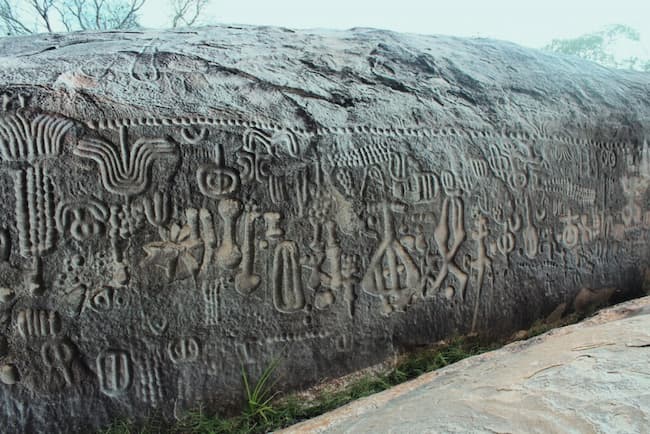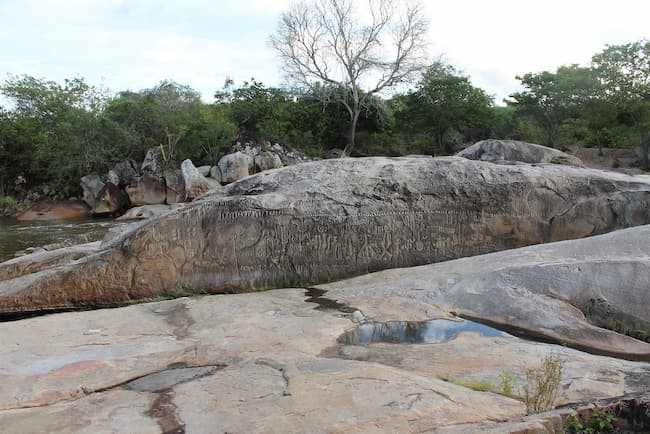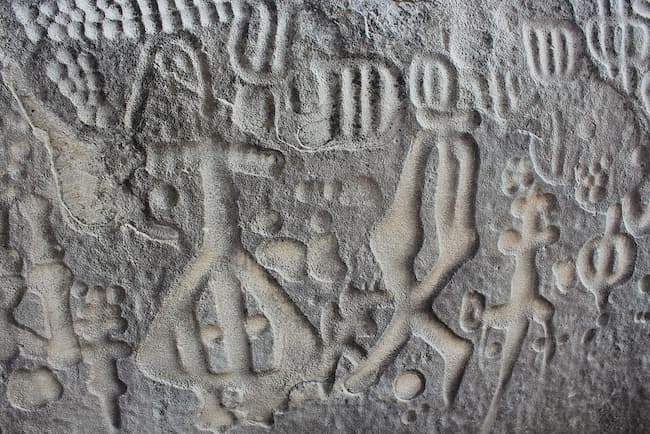Nestled deep within the Brazilian state of Paraíba, a perplexing archaeological puzzle has confounded both scholars and spectators for centuries—the enigmatic Ingá Stone.

This colossal rock, known as “Pedra do Ingá” in Portuguese, stands defiantly amidst the Ingá River near the quaint city of Ingá in northeastern Brazil. Its towering dimensions of approximately 3.8 meters in height and 46 meters in length make it one of the largest inscribed stones globally, a testament to the burst of ancient creativity etched across its surface. Here, intricate engravings weave a tapestry of symbols, encompassing humans, animals, geometric shapes, and cryptic hieroglyphs.

The origins of this cryptic monolith remain veiled in mystery, with debates among scholars surrounding its age and purpose. Geologists hazard a guess, placing its creation at a staggering 6,000 years ago, likely the handiwork of natives inhabiting the region until the 18th century.

Numerous theories have emerged, attempting to unravel the purpose behind the Ingá Stone’s elaborate engravings. Some posit a cryptic written language or communication system yet to be deciphered, while others suggest a religious or spiritual function, acting as a conduit for ancient rituals. Wilder speculations propose it as a treasure map or extraterrestrial message, ascribing the markings to visitors from outer space.

Let’s veer towards the more grounded theories. One compelling hypothesis delves into archeoastronomy, attributing remarkable significance to the petroglyphs. In 1976, Spanish engineer Francisco Pavía Alemany embarked on a mathematical exploration, uncovering a “solar calendar” formed by bowls and petroglyphs on the stone’s vertical surface. According to Alemany, a gnomon cast the shadow of the first sunlight each day onto this celestial calendar.
Expanding on this, F. Pavia explored a series of engravings, interpreting them as a multitude of “stars” arranged in “constellations.” The coexistence of these celestial motifs and the solar calendar adds an archeoastronomical layer to the stone’s enigmatic aura.

In the early 20th century, Ludwig Schwennhagen, hailing from Austria, delved into Brazilian history, revealing intriguing parallels between the Ingá Stone symbols and iconography associated with the Phoenicians, as well as the demotic writings of ancient Egypt. Furthermore, researchers identified uncanny resemblances between the carvings on the Ingá Stone and indigenous artwork found on Easter Island.
A recent study by Telma Costa introduces a linguistic dimension, proposing that the stone not only signifies the origin of languages rooted in botanical knowledge but also conveys the ancient people’s understanding of the fertilization and crossing of the Ingazeira, a Brazilian tree.
As we navigate this enigmatic riverbed of mysteries, could the horizontal line above the figures denote the water level during a specific period of the year? The Ingá Stone, a cryptic testament to ancient creativity, continues to perplex and captivate, leaving us to ponder the profound secrets etched into its enduring surface.

